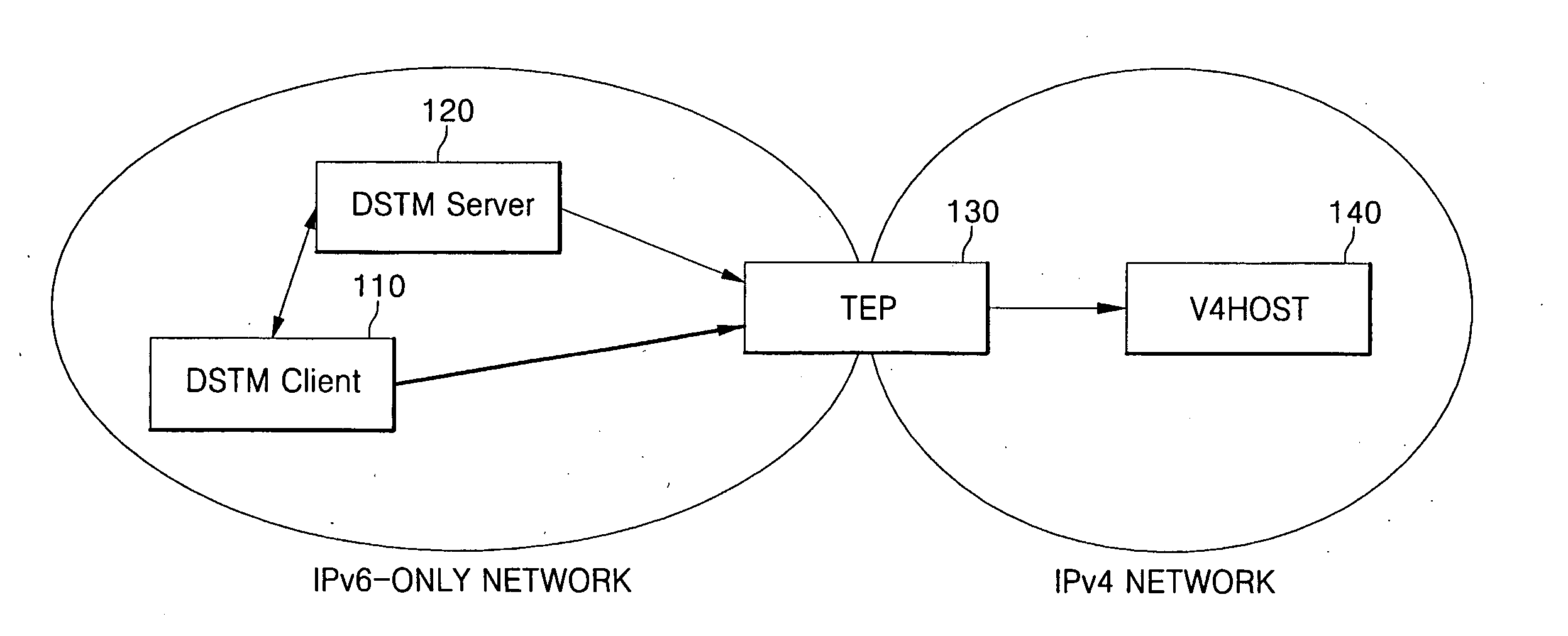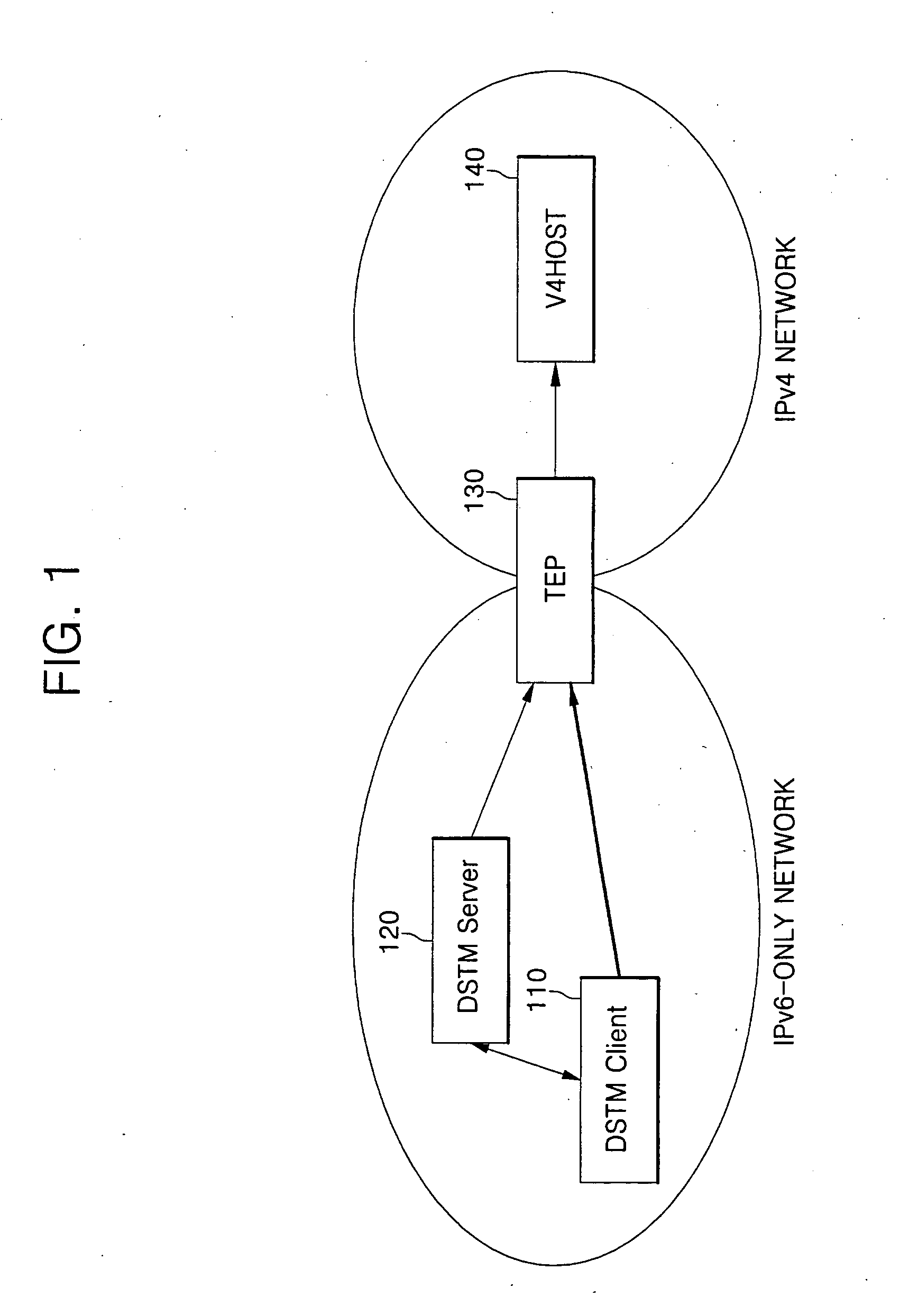IPv4-IPv6 transition system and method using dual stack transition mechanism(DTSM)
a transition system and transition mechanism technology, applied in data switching networks, multiplex communication, frequency-division multiplexes, etc., can solve the problems of inefficiency in this address arrangement, no addresses remain, unsuitable for rapid internet development, etc., and achieve the effect of reducing the use of global ipv4 addresses and relatively simple network managemen
- Summary
- Abstract
- Description
- Claims
- Application Information
AI Technical Summary
Benefits of technology
Problems solved by technology
Method used
Image
Examples
Embodiment Construction
[0058]FIG. 1 is a view of a DSTM structure. The DSTM is composed of a DSTM client 110, a DSTM server 120, a TEP 130 and a V4HOST 140.
[0059] If the DSTM client 110 of an IPv6-only network attempts to begin communicating with a node D of an IPv4 network, it first requests the DSTM server 120 to assign a temporary IPv4 address. The DSTM server 120 then assigns an temporary IPv4 address for a node A, informs the node A of the assigned IPv4 address, address information of the TEP and lifetime of the assigned IPv4 address, and also transfers the corresponding information to the TEP 130.
[0060] The DSTM client 110 that has received the information from the DSTM server 120 initializes its own IPv4 stack, encapsulates the IPv4 packet into IPv6 and transfers it to the TEP 130. The TEP 130 decapsulates the packet and forwards the decapsulated packet to the V4HOST 140. The packet transferred to the DSTM client 110 from the V4HOST 140 is transferred to the TEP 130, and is then IPv6-encapsulated...
PUM
 Login to View More
Login to View More Abstract
Description
Claims
Application Information
 Login to View More
Login to View More - R&D
- Intellectual Property
- Life Sciences
- Materials
- Tech Scout
- Unparalleled Data Quality
- Higher Quality Content
- 60% Fewer Hallucinations
Browse by: Latest US Patents, China's latest patents, Technical Efficacy Thesaurus, Application Domain, Technology Topic, Popular Technical Reports.
© 2025 PatSnap. All rights reserved.Legal|Privacy policy|Modern Slavery Act Transparency Statement|Sitemap|About US| Contact US: help@patsnap.com



